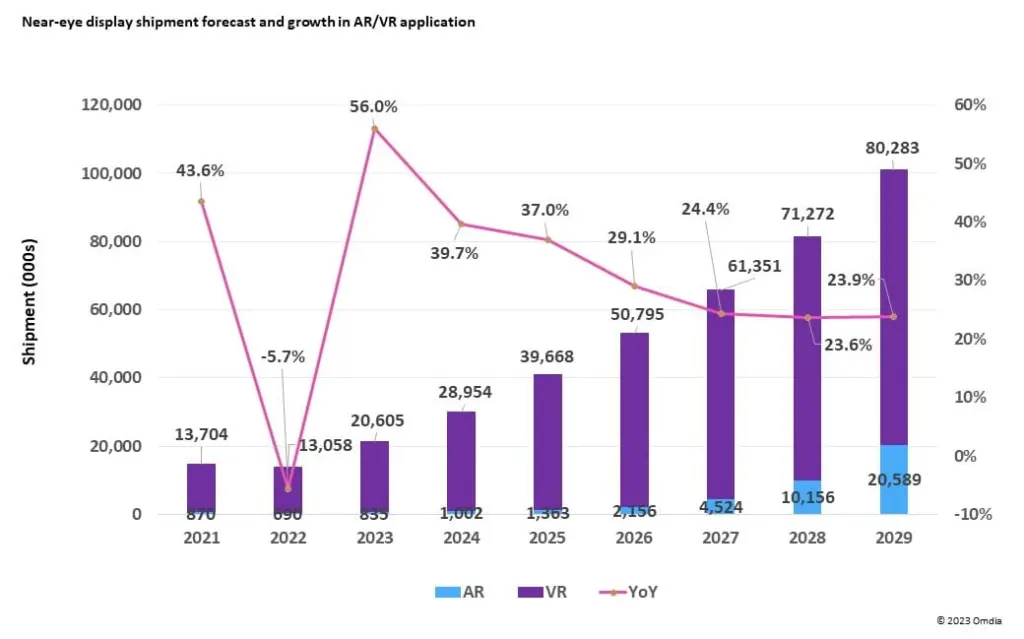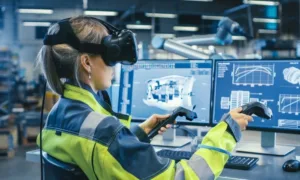According to the latest report by Omdia, near-eye display shipments for extended reality (XR) applications, encompassing augmented reality (AR), virtual reality (VR), and mixed reality (MR), are projected to witness a significant 56% year-on-year (YoY) growth, reaching 21.4 million units in 2023.

The year 2022 saw a decline of 5.7% in near-eye display shipments due to subdued demand, budget constraints, and geopolitical uncertainties. However, Omdia senior research analyst, Kimi Lin, predicts a brighter outlook for 2023, citing the release and announcement of new VR models in the first half of the year. Notable among these devices are the Sony PSVR 2, Apple Vision Pro, and Meta Quest 3, all equipped with dual displays, driving an expected surge in near-eye display shipments.
In terms of revenue, the research predicts a 59% YoY growth in 2023, surpassing the shipment growth rate. This boost is primarily attributed to the adoption of advanced display technologies like AMOLED or OLEDoS in these XR devices, contributing to higher-priced displays and consequently driving revenue growth.
In 2023, VR applications are expected to dominate near-eye display shipments, accounting for over 95% of the total. This dominance is anticipated to continue until 2026, driven by the mature manufacturing and affordability of LTPS TFT LCD and AMOLED display technologies used in VR devices.
Conversely, AR applications mostly rely on silicon-based displays, such as LCoS (liquid crystal on silicon), LBS (laser beam scanning), DLP (digital light processing), OLEDoS, and LEDoS (micro-LED on silicon). While OLEDoS is currently prevalent, its brightness falls short of outdoor requirements, making it susceptible to ambient light interference. On the other hand, LEDoS displays offer significantly higher brightness, holding the potential to be adopted in various AR applications. The surge in LEDoS displays could take place around 2027.
The growth in near-eye display shipments for XR applications indicates a promising future for the immersive technology industry. With the introduction of new VR models and the advancement of display technologies, the XR landscape is set to evolve, enabling novel experiences for users across industries.

